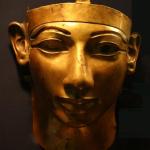
(Image by Diego Delso, delso.photo, License CC-BY-SA)
Two new items appeared on the website of the Interpreter Foundation today:
“Prophet or Loss: Mosiah1/Zeniff, Benjamin/Noah, Mosiah2/Limhi and the Emergence of the Almas,” written by Val Larsen
Abstract: Mormon’s overwhelmingly dominant rhetorical purpose is to testify of Christ, which he and his protagonists often directly do. But he also communicates his testimony more subtly through carefully crafted historical narratives. His use of frame narratives is especially artful. In the Book of Mosiah, Mormon frames the dispiriting account of Zeniff and Noah’s rule with the story of its aftermath: the suffering of Limhi and his people, which is recounted both before and after the central Zeniff/Noah narrative and which underscores the folly in the narrative it frames. The Limhi story is, in turn, framed by a Mosiah family narrative that features prophet kings Mosiah1, Benjamin, and Mosiah2 and that, likewise, underscores the folly in the Zeniff/Noah/Limhi story through pointed contrasts with Mosiah1/Benjamin/Mosiah2, the antitypes of the Zeniff-family kings. Benjamin’s great discourse on Christ, the most important component of the Mosiah narrative is also set within a frame narrative, a coronation account, which creates a political subtext in that great spiritual sermon and that, likewise, underscores the folly of the Zeniff family’s failure to follow the prophets God sent them. The article concludes by discussing the emergence of the Almas as the first family of Nephite history, the connecting thread that runs through Mormon’s account of the next ten generations of Nephite history.
“Interpreting Interpreter: Contrasting Mosiah’s Dynasties,” written by Kyler Rasmussen
This post is a summary of the article “Prophet or Loss: Mosiah1/Zeniff, Benjamin/Noah, Mosiah2/Limhi and the Emergence of the Almas” by Val Larsen in Volume 60 of Interpreter: A Journal of Latter-day Saint Faith and Scholarship. All of the Interpreting Interpreter articles may be seen at https://interpreterfoundation.org/category/summaries/. An introduction to the Interpreting Interpreter series is available at https://interpreterfoundation.org/interpreting-interpreter-on-abstracting-thought/.
The Takeaway: Larsen argues that the Book of Mosiah frames a strong contrast between the family lines of Mosiah (i.e., Mosiah1, Benjamin, Mosiah2) and Zeniff (i.e., Zeniff, Noah, Limhi), with each pair of kings mirroring each other in ways that highlight the spiritual follies of Zeniff’s family line. In doing so, Larsen proposes sexual symbolism in the context of Benjamin’s sermon that contrasts righteous sexuality with the wanton whoredoms of King Noah.

I’ve seen a couple of articles online about the rather severe prison sentences that were recently handed-down for Utah “parenting influencer” Ruby Franke and her business partner, Jodi Hildebrandt. I haven’t really been following the story very much, although I know vaguely what the accusations against them were. And not merely because I’ve been traveling. I also haven’t followed very closely the details of the stories about Hunter Biden’s personal life, say, or Johnny Depp’s battle with his ex-wife, or Fani Willis’s relationship with Nathan Wade, or the accusations against Timothy Ballard, or Donald Trump’s financial and other entanglements with Stormy Daniels. I figure that the relevant courts will sort through such matters. If sanctions or punishments are warranted, I’m serenely content for the courts to hand them out.
In the case of these two articles — one from New Zealand and one out of the United Kingdom — about Franke and Hildebrandt, though I’ve been struck, as I often am, by their emphasis on the fact that both of the women are “Mormons.”
I’ve noticed the same thing for years, at least since the case of Richard Floyd McCoy (“Mormon Sunday School Teacher Hijacks Airliner”). In his case, his status as a teacher in Sunday School was surprising enough that I suppose it was worth mentioning. And perhaps mentioning the religious affiliation of Ruby Franke and Jodi Hildebrandt is also understandable, since it adds a curious dimension to their story.
But both articles about their case were followed by scores of comments decrying the allegedly cultish, controlling, and misogynistic nature of “Mormonism,” which the letter writers plainly assumed to be the sole and sufficient explanation for the clear misbehavior of Hildebrandt and Franke, and there was little or no pushback from anybody on the matter.
I found this quite unfortunate and more than a bit frustrating. After all, the actions of Franke and Hildebrandt that have been in question, and the legal actions against them, were all centered in St. George, Utah, or at least in Washington County. So isn’t it likely that at least some, and probably most or even perhaps all, of the jurors involved in their cases (if they were jury trials) were Latter-day Saints? Isn’t it probable, too, that at least some, and likely most or even perhaps all of the neighbors who apparently complained to the authorities about their treatment of children were Latter-day Saints? Isn’t it very probable, as well, that the judge who handed down the sentences is a member of the Church of Jesus Christ of Latter-day Saints? And wouldn’t this be worth mentioning? Doesn’t it seem relevant to the claim that Ruby Franke and Jodi Hildebrandt represent the cultish, controlling, and misogynistic character of the Church?

We drove to the Sydney Airport just as thousands of fans of Taylor Swift had gathered for the first of her four evening concerts in Accor Stadium (which, I’ve read, can hold about 80,000 spectators, but which, at least according to one item that I just saw, may somehow have held about 96,000 fans for last night’s concert). It didn’t look promising. As we drove to the airport, rain was pouring down. Apparently, though, the Swifties had a great time. They were visible as we walked around Sydney’s Circular Quay the day before the concerts began, and we even encountered them in our hotel. The one with whom we spoke was, to judge from her accent, either American or Canadian. She told us that she was in Sydney for Taylor Swift — which is to say that she was very likely a groupie who had come to Australia for the “Eras Tour.”
Such things amaze me. And, by the way, for an Australian clergyman’s meditation on the phenomenon of this phenomenal cultural force — he attended last night’s concert — see “The transcendence and immanence of Taylor Swift.”
Also by the way: There is a really good Vietnamese food place in the International Terminal of Sydney Airport. It is La Fraiche Banh Mi. I don’t know that there are any readers of my blog who will be passing hungrily through Sydney’s airport anytime soon, but I do recommend La Fraiche Banh Mi if you do.
Posted from Līhuʻe, Kauaʻi, Hawai’i












